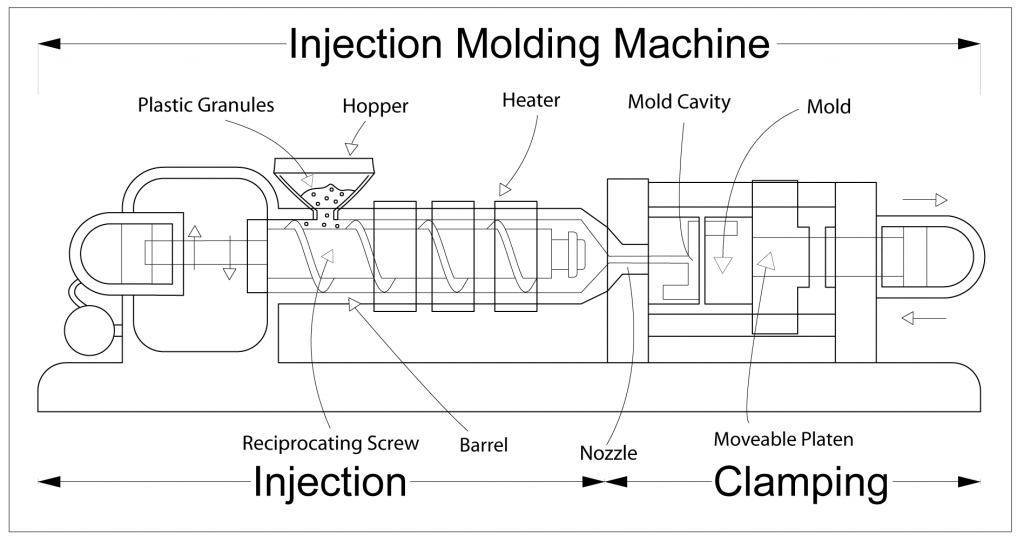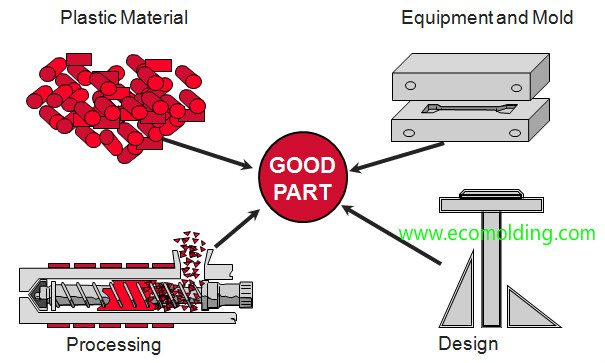Exactly How Plastic Injection Molding Guarantees Uniformity and Accuracy in Production
Exactly How Plastic Injection Molding Guarantees Uniformity and Accuracy in Production
Blog Article
Understanding the Basics of Plastic Injection Molding Procedures
Plastic shot molding serves as a foundation of contemporary production, providing a methodical technique to generating complex elements with accuracy. This procedure not only encompasses the basic actions of melting and infusing products into mold and mildews however also entails a nuanced understanding of numerous influencing elements, such as temperature and pressure. As markets significantly require performance and quality, the complexities of this method come to be a lot more crucial. Checking out these vital aspects might expose exactly how even minor modifications can cause considerable enhancements in production outcomes, questioning about the potential for technology in this recognized procedure.
What Is Plastic Shot Molding?
Plastic injection molding is an extensively used production process that changes thermosetting and polycarbonate products into accurate and intricate shapes. This method is preferred for its ability to generate high quantities of similar get rid of extraordinary precision, making it an important approach in various markets, consisting of automotive, customer items, and medical gadgets.
The procedure involves melting the selected plastic product and infusing it into a mold under high stress. The mold and mildew, designed to the specs of the preferred component, allows the molten plastic to take shape as it strengthens and cools down. Once the material has hardened, the mold is opened, and the ended up part is expelled.
Plastic injection molding provides a number of benefits, consisting of reduced waste, consistency in manufacturing, and the ability to include intricate designs that may be challenging with other producing techniques. Furthermore, it sustains a broad variety of materials, each supplying special buildings that can be customized for details applications. As industries remain to introduce, plastic shot molding continues to be at the center, enabling the growth of innovative items that fulfill progressing customer demands.
The Injection Molding Process
The shot molding procedure is an innovative strategy that includes a number of essential stages to generate high-grade plastic parts. Plastic pellets are fed right into a warmed barrel where they are melted right into a thick liquid. This molten plastic is after that injected under high stress right into a precision-engineered mold, which shapes the material right into the preferred kind.
Once the mold and mildew is filled up, the plastic is permitted to strengthen and cool, taking the form of the mold cavity. Cooling time is crucial, as it influences the cycle time and the last residential properties of the molded component. After adequate cooling, the mold and mildew opens, and the completed component is expelled using ejector pins.

Products Made Use Of in Shot Molding
Different materials can be used in the injection molding process, each offering distinct properties that satisfy specific applications. One of the most commonly used products consist of thermoplastics, thermosetting plastics, and elastomers.

Thermosetting plastics, like epoxy and phenolic materials, undergo a chemical modification throughout the curing procedure, causing a rigid, stringent framework. These materials are optimal for applications requiring high warm resistance and architectural honesty, typically made use of in electrical insulators and vehicle components.
Elastomers, consisting of silicone and rubber-based materials, offer versatility and resilience. Their special residential or commercial properties make them suitable for applications that require elasticity, such as gaskets and seals.
Furthermore, specialty products like bio-based plastics and compounds are gaining traction for their environmental benefits and improved efficiency features, broadening the scope of injection molding applications in different markets. Recognizing read this article the homes of these products is vital for picking the appropriate type for specific projects.
Advantages of Injection Molding
Shot molding stands out as a highly efficient production procedure that supplies countless benefits for creating complicated parts with precision. One of the most substantial advantages is the capacity to produce elaborate styles that would be difficult or tough to accomplish with other methods (Plastic Injection Molding). The procedure enables thorough attributes and limited resistances, making sure top notch elements
Additionally, shot molding is understood for its rapid manufacturing abilities, making it a suitable choice for high-volume production. As soon as the mold is produced, components can be produced quickly, lowering lead times and increasing total YOURURL.com efficiency. This efficiency not only reduces manufacturing expenses but likewise provides an affordable edge on the market.
The convenience of materials made use of in injection molding better improves its allure. A vast array of thermoplastics and thermosetting polymers can be utilized, permitting makers to pick materials that ideal satisfy their specific demands, including flexibility, stamina, and warmth resistance.
In addition, the process lessens waste, as excess product can typically be reused and recycled. This sustainability aspect adds to a lowered ecological impact, making injection molding an accountable production choice. In general, the advantages of shot molding make it a recommended technique for lots of sectors.
Aspects Impacting Product Top Quality
While countless elements can affect product high quality in shot molding, understanding these elements is vital for attaining optimum outcomes. Trick aspects consist of product option, refining criteria, and mold and mildew layout.
Product option plays an essential duty, as various polymers show one-of-a-kind homes that impact flowability, stamina, and thermal stability. Inadequate material choice can lead to defects such as bending or insufficient dental filling.
Processing specifications, including pressure, temperature, and cycle time, must be meticulously regulated. Variants in these settings can result in disparities partially measurements and surface area finish. Exceedingly high temperature levels might cause destruction of the polymer, while insufficient pressure can result in brief shots.
Mold design is similarly important, as it figures out the flow of the molten plastic and the cooling process. Inadequately created molds might result in uneven air conditioning rates, causing residual tensions and dimensional inaccuracies.

Conclusion
In conclusion, plastic shot molding acts as a critical production procedure that makes it possible for the reliable manufacturing of top notch elements. Mastery of the injection molding procedure, consisting of the understanding of products and the impact of numerous aspects on item high quality, is necessary for achieving optimum outcomes. The benefits of this technique, such as cost-effectiveness and design flexibility, more emphasize its relevance across several sectors, strengthening its condition as a preferred selection for high-volume manufacturing.
Plastic injection molding offers as a foundation of modern production, supplying a methodical approach to generating complicated components with accuracy.Plastic injection molding supplies a number of benefits, including reduced waste, uniformity in production, and the capacity to integrate intricate styles that may be testing with other making methods (Plastic Injection Molding). As sectors continue to introduce, plastic injection molding continues to be at the leading edge, making it possible for the advancement of innovative products that fulfill developing customer demands
The shot molding process is an advanced technique that includes numerous essential phases to produce top notch plastic components.In verdict, plastic injection molding serves as an essential manufacturing procedure that enables the effective production of premium parts.
Report this page